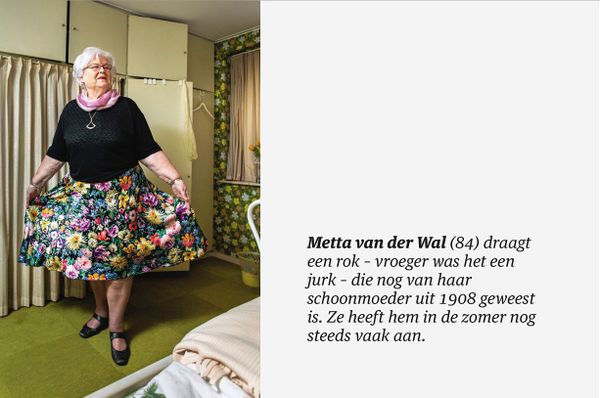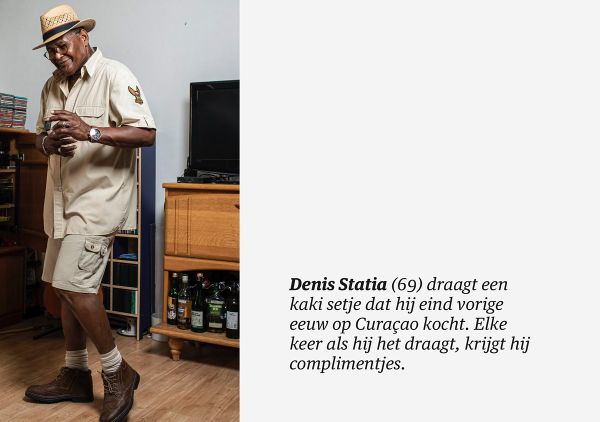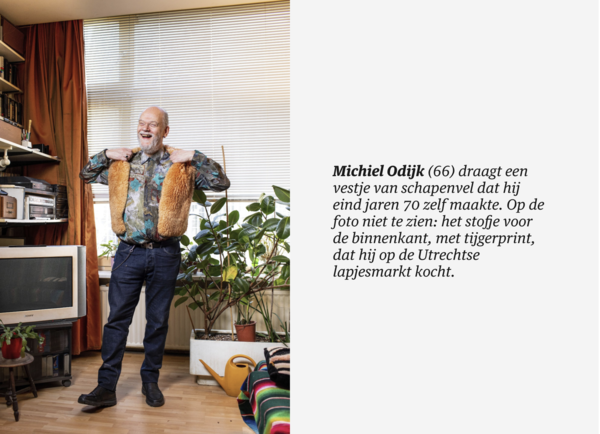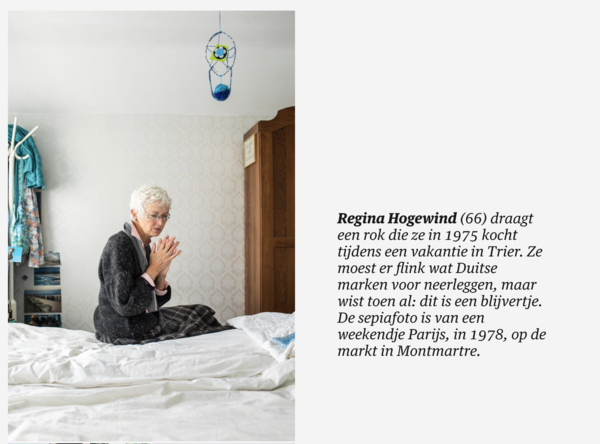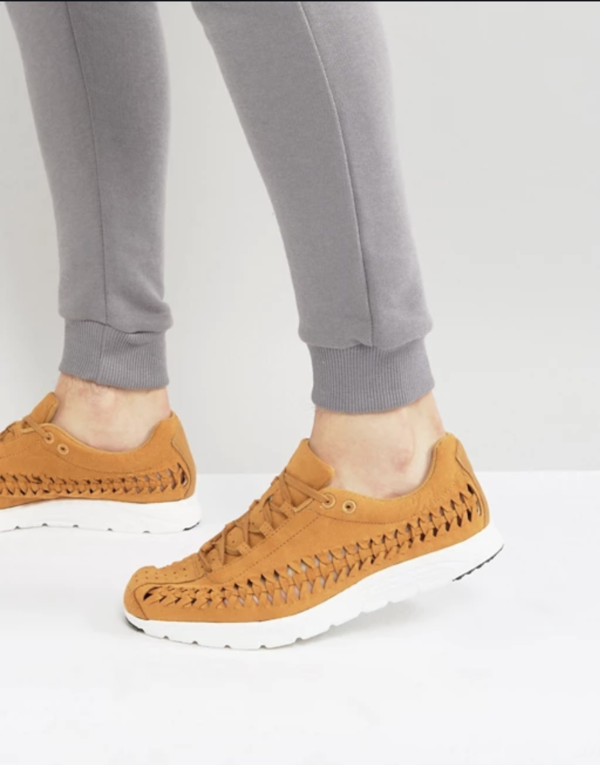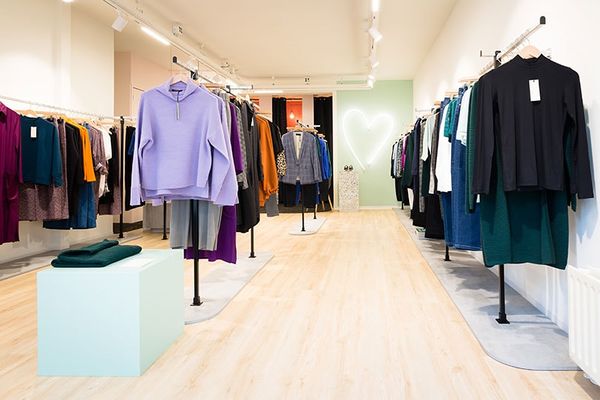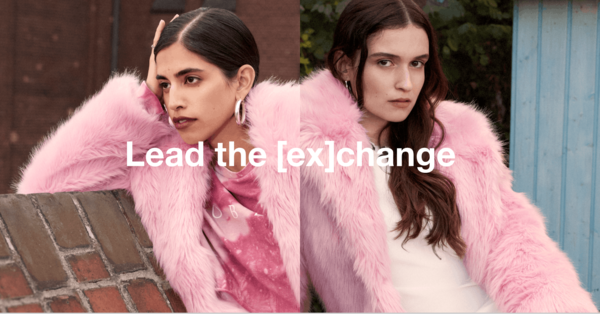SALE: up to -70% on the emotional value of clothing!!!
Contents
The wikipage input value is empty (e.g. SomeProperty::, [[]]) and therefore it cannot be used as a name or as part of a query condition.
WEIRD societies
In the book Doughnut Economics by Kate Raworth, the concept of WEIRD societies occur. The WEIRD societies are the ones that are Western, educated, industrialised, rich and democratic. These societies are often the people who are referred to in academic research papers. This is also the main reason why I chose to do research into these societies. Examples of these societies are the people who have a higher education and are more prosperous in countries like the United States, England and of course the Netherlands.
Which factors are there?
In the research paper The emotional value of clothing, by AMFI student Sanne van der Bunt, five main factors which influence the emotional value of clothing are explained.
Time
Time is very important for the emotional value of an item. Having an emotional connection with a piece of clothing once, is not strong enough. By having this emotional connection on a regular basis, the consumer creates a bond with it. Over time this will evolve into a relationship between consumer and product.
Memories
Memories are very important for an emotional value. Clothing can remind us of a certain memory or thought. Therefore a ‘normal’ piece of clothing can become very special for a certain person. Memories will strengthen the bond between consumer and product.
Personal expression
Clothing often represents who you are and what you stand for. Who you are is constantly changing, because of this, there is also a need for clothing who changes with you. The consumer wants clothing to tell their personal story, not only for themself, but also to society. When a piece of clothing represents what they stand for, the emotional value to that piece of clothing grows.
Make it your own
The value of a piece of clothing often develops when the item is worn. Altering your clothes can create a bond between consumer and product. Alterations and reparations can give a piece of clothing a personal meaning, making a mass-produced product into something unique.
Users experience: The experience of getting to know a piece of clothing and using it can be very interesting. Most consumers don’t even notice these small experiences, however after a period of time, these experiences will become meaningful associations, creating a bond.
In practice, these five factors also appear. Some more than others. Photographer Maartje ter Horst wanted to capture this emotional value in a photo series. Ter Horst photographed people who owned the same piece of clothing for decades. In the article ‘Al 50 jaar dat ene jurkje’ (that one dress for 50 years) it is explained how ter Horst wanted to inspire people, without having a judgement. What was very noticeable is the fact that most people ter Horst talked to weren’t busy with the climate or climate change, it was people who found the idea of shopping on a weekly base absurd.
When looking at the pictures and reading the stories of the people, I noticed that most of the items they own for a longer period of time represent a specific memory or time. Over time the pieces of clothing become more valuable, they create a story built up by memories. Some pieces of clothing were self made or handed over from generation to generation, others were bought in a specific place, or in a specific time.
A timeline of the fashion industry
The history of the fashion industry started in the late 1600 and the early 1700, when slop shops arose. Slop shops were second hand clothing stores. These shops created the first demand for ready-made clothing. Inventions such as the cotton gin and the sewing machine made it easier to produce clothing from cotton quicker and more efficient than wool and linen. America capitalized the cotton production through slavery. Because of the cheap labor and the new technologies, the prices became lower and consumers and the working class got access to better quality clothing. In the 18th and 19th century, the enclosure movement took place; land was fenced and given to one owner. This led towards a big unemployment among the british population. This unemployment resulted in urbanisation. People in the city started working in factories and became wageworkers. During WWII a new mass production technique was introduced. This made it possible to supply large quantities at lower prices. Since the 60s, the emergence of clothing made out of synthetic fabrics, such as polyester, started. These materials were a lot cheaper than natural fibers such as cotton or silk. In the mid 1970s, clothing manufacturers lost market control to large retailers. Production is starting to get outsourced to countries with cheaper labor and low price stores like Wal-Mart entered the market. The mid 1980s was the starting point of the current supply chain. Large retailers are dependent on a supply chain model, a result of consumers wanting products to be cheaper and cheaper. The past 20 years, globalization resulted in outsourcing to developing countries. Because of the outsourcing, the cost of clothing dramatically fell. Fast fashion emerged in Europe to meet the rapidly changing preferences of young women who wanted to be on trend for a small price. A new supply chain model emerged; fast fashion. Fast fashion made ‘copied’ high fashion available at a rapid speed by fast design, production, distribution and marketing. With fast fashion, the consumer can get more clothing at a low price. Nowadays fast fashion is the norm in the fashion industry.
How our relationship with clothing changed over the years
Before the slop shops, the relationship between people and their clothing was very different. Clothing was made from scratch, and for most people the only function of clothing was protection and coverage of the body. Only the very wealthy people would have clothing to show status. In 1960 the average American household would spend over 10% of their income on clothing and shoes. Nowadays this would be the equivalent to 4.000 dollars. The average person bought 25 pieces of clothing every year. In 2013 less than 3,5 percent, which is less than $1,800, of the budget of an average American is spent on clothing and shoes. However this does not mean the amount of clothing bought is also less, the opposite. In the United States nearly 20 billion pieces of clothing are sold per year. This comes to an average of 70 items per person, which is more than one item a week. In the period between 2000 and 2015, the production of clothing doubled. And with this doubling in production, also came a doubling in textile waste. Fast fashion has turned clothing of value, quality and timelessness into a disposable item. Most people don’t know the effort which is put into a piece of clothing, they just see a product and a price tag. Because clothing is cheaper nowadays, the expectations of the consumer is lower. This means that manufacturers can get away with bad quality clothing which will only last one season or even a couple of washes. According to trade association the International Fabricare Institute, today’s men shirts are designed to last only 30 washes. Impermanence - Dictionary Cambridge ‘the state of not lasting forever or not lasting for a long time’ - is used by some brands as a strategy to sell more products. Take Nike for example, they charge £90 (about €98) for its Mayfly trainers, trainers which were designed to fall apart after only 100 km of wearing them. Clothing is designed to wear out, lose shape or fall apart. The goal of this trick? Force consumers to keep buying new replacements. The cheapness of fast fashion, combined with the rapid productions and bad quality all have its effect on the emotional value of an item. Important conditions to create a bond with your clothing such as time and user experience are not met.
The current relationship between fashion and consumer
The amount of clothing people in WEIRD societies have in combination with the cheap prices and bad quality really damage the relationship between fashion and consumer.
In a research from Greenpeace in 2016, half of the interviewed people said they have more clothing than they need. About half of the interviewed said the moment of happiness after buying a new item fades away after one day.
In the period 2000-2015 the amount of time we wear clothes decreased by one third. In Europe a piece of clothing is worn an average 100 times, in the United States, this is a sad 40 times before it is thrown away.
The average dutch person owns about 173 clothing items, 50 items which have not been worn in the last year. The dutch consumer buys an average of 46 new items annually, with an average price of 16 euros per item. Often clothing is bought with the expectation it will fulfill some sort of emotional need. The expectations which are attached to this clothing item is extremely high. Most of the time, the clothing can’t fulfill the expectations and it will disappoint the consumer. Because of this disappointment, the consumer will consider the item being worthless.
Each Dutch inhabitant throws away an average of 40 clothing items per year. Most clothing is often not repaired, because it is cheaper to buy something new.
The amount of clothing we have, buy and throw away are enormous. This makes it almost impossible to form a relationship between fashion and consumer. The amount of time we wear one item has shrunk, resulting in almost no time and memories related to that specific item.
Other factors such as user experience, and making something your own don’t even occur, because of the short lifespan of a product and the fact that clothing is often not repaired, but thrown away.
Countermovements
Within the WEIRD societies there are also some countermovements towards this way of consuming and caring for your clothes.
Slow fashion
Slow fashion is about being aware. Aware of the things you buy, the things you keep and how you keep it. In slow fashion, clothing items do not only represent an outfit, they represent norms and values of what you find important in life. The clothing produced has a good quality, needs to be environmentally friendly and offers honest prices for producer and consumer. An example of slow fashion is Joline Jolink Her designs are quality, timeless and ethically made. She works in small amounts, to combat overproduction, and designs seasonless.
Minimalism
Minimalism is a design or style in which the simplest and fewest elements are used to create the maximum effect. Minimalism as a lifestyle represents the aim to remove clutter from all facets of life. In the end you will only own what adds value and meaning to your life, the rest will be removed. Minimalism in fashion can be represented by a capsule wardrobe. A capsule wardrobe consists of a minimum of twenty and a maximum of forty pieces of clothing. There are approximately 3 items per category. The trick with a capsule wardrobe is to combine multiple items together therefore you can create a lot of different outfits with the same items.
Second hand clothing
Marketinvestigator GlobalData believes the worldwide trade in second hand clothing will double in the upcoming five years. Second hand and vintage clothing is becoming more popular especially amongst younger people. The ecological footprint of a second hand item is a lot lower because it is already produced and selling clothing second hand will lower the amount of textile waste. Vintage items often have a good quality because they were produced before the area of fast fashion. Large companies such as the online warehouse Zalando also started with releasing a pre-owned category in october 2020. By turning in old clothes, you can choose for a Zalando gift card, or donating the money to charity. It is doubtable if Zalando offers the pre-owned category because of sustainable reasons or to attract a new target group to sell more new items, however in my opinion I think it is a good start for taking responsibility for the clothing you produce, after being sold and used.
Conclusion
In conclusion the relationship between consumer and product is determined by the amount of time you spend with the product. Memories and user experience will be linked to the product resulting into a relationship between consumer and product.
The rise of fast fashion rapidly changed this relationship between consumer and product. The fashion industry started to produce rapidly, to keep up with the consumer’s demand. This rapid production resulted in bad quality and trendy clothing which only lasted for one season. Some brands even design clothing which wears out after only 30 washes, to force the consumer to buy new items. Fashion is seen as a disposable item, which results in no emotional value. That lack of emotional connection with clothing is the main reason for the expanding quantity of textile waste. Without emotional value an item which can bring up a feeling, memory or ambiance becomes just a piece of textile.
Fortunately also countermovements arose, to bring value back to clothing. For me personally I think it is important to be aware of the things you buy and dispose of.
I believe that by thinking thoroughly before buying and choosing long lasting items, the emotional value of clothing can be restored. Minimizing what you have will appreciate it more. Owning less and cherishing what you have will bring back emotional value to clothing.
Other sources used (which couldn’t be hyperlinked)
van den Sigtenhorst, Stephanie. A sustainable wardrobe. Editie onbekend. Utrecht/Antwerpen: Kosmos Uitgevers,
2020. Print.Links
CONTRIBUTE
Feel free to contribute to Beyond Social.

